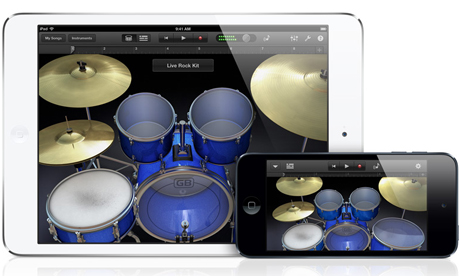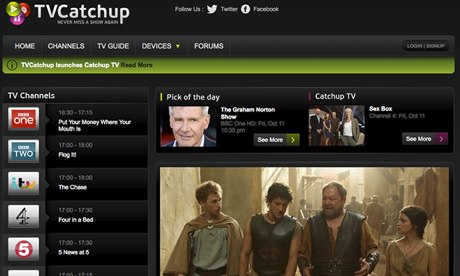In the Age of Media Six Questions about Media and Participation
David Buckingham, Professor of Media and Communications at Loughborough University, considers some of the revolutionary claims made for participatory media and 2.0, and makes a case for cautious optimism rather than whole-hearted celebration.
The article is about the transfer from the old to the new in terms of technology and how it affects online social media. Also going on to say that people are no longer media consumers they now can control the content online and produce their own content.
1. What’s new?
The term ‘Web 2.0’ seems to have been coined by the digital marketing entrepreneur Tim O’Reilly back in 2001. In some ways, it was an attempt to re-brand the internet business after the bursting of the so-called ‘dot.com bubble’ – the collapse of many internet companies that took place around the millennium.
Many people have questioned whether ‘Web 2.0’ is actually any different from ‘Web 1.0’ that preceded it. Tim Berners-Lee, widely identified as the inventor of the World Wide Web, has argued that the basic technological infrastructure and many of the forms of Web 2.0 have been around since the beginning of the internet.
"...The impact of cable TV, portable video, radio and even the printing press. All these things were apparently going to bring ‘power to the people"
In terms of media theory, there’s a danger of a kind of technological determinism here – the idea that technology will bring about revolutionary social change, in and of itself. Yet technologies do not come from nowhere: they are created in response to wider social, economic and cultural developments. And their impact is always dependent on how they are used, by whom, and for what purposes.
2. Who’s participating?
While there are some gender differences – young women are leading the way in areas like blogging, while young men tend to dominate video-sharing – the most remarkable differences are in terms of social class. At least in the US, it is young people from high-income families who are most likely to be posting or sharing online.
While people in disadvantaged communities do increasingly have computers at home, they are less likely to have the multimedia capabilities and bandwidth that are needed for more sophisticated content creation and sharing.
‘Digital divides’
'young adopters'
While younger people initially drove the uptake of social networking sites, for example, older people are now the fastest-growing group of subscribers. The same is true of mobile communications; while the micro-blogging service Twitter is largely dominated by middle-aged people.
3. What are they doing?
Enthusiasts for participatory media tend to celebrate the more artistic or innovative ‘cool stuff’ that can be found online – fan-produced mashups, videos about political activism, or experimental digital poetry. They tend to ignore the relatively banal domestic practices of the majority of people – such as the funny videos of pets and children and domestic accidents that tend to achieve the highest hit rates on sites like YouTube.
Our research on amateur video-making found that it continues to be dominated by home movies of family life, children’s birthday parties or holidays on the beach. This material is rarely edited or shared, and is kept as a record that people imagine will be watched at some time in the future, even if it rarely is.
4. Who’s making money?
'Technology is shifting power away from the editors, the publishers, the establishment, the media élite… now it’s the people who are taking control.' ---- quote from Rupert Murdoch
he two richest and most profitable global media corporations are now Google and Facebook. Both are increasingly diversifying from their initial business – as a search engine and a social networking site – into a whole range of other media and branded products and services.
The internet is an exceptionally efficient medium for niche marketing and for targeting individual consumers. As we surf around, detailed information about our preferences and buying habits is being gathered, often without us knowing it (by means of ‘cookies’ that are planted on the hard drive of our computers). This information is used to ensure that advertising and marketing are targeted only at those people who are most likely to be interested in it; and through a practice known as ‘data mining’, the data can be aggregated and then sold on to other companies.
5. Who’s doing the work?
Much of this marketing is itself ‘user-generated’ and ‘interactive’. This is most obvious in the case of viral marketing, where consumers are effectively recruited to distribute commercial messages on behalf of companies. Other companies (such as the mobile phone provider Orange) have picked up on the idea of ‘user-generated content’ by running competitions for consumers to create videos to promote their products.
'fan websites'
6. Will Media 2.0 save democracy?
So there is a debate to be had about the wider social and political implications of Media 2.0. While some of these developments may have been exaggerated, and some may be much less exciting and innovative than people have claimed, it’s clear that we are in a period of significant change. But does this amount to a democratic revolution in communications? Is it really liberating or empowering ordinary people to take control of the media?
Participation Debates – The media and democracy
What is ‘democracy’?
Simply, democracy is a form of government in which all eligible people have an equal say in decision-making. It is the system of government used in most countries in the world except one-party states such as China
The idea of ‘one person one vote’ to the modern media landscape. Take The X Factor as an example: in the 2010 series, 15,488,019 million votes were cast by viewers to decide the outcome of the programme. This may seem a trivial example – Matt Cardle (or even Little Mix) is unlikely to change the world; but it’s an example of media democracy at work. Simon Cowell clearly understood the importance of media democracy when he said:
The great thing is when you start seeing it in places like China and Afghanistan. It’s democracy. We’ve kind of given democracy back to the world.
On a more political level, some commentators have claimed that the uprisings in Egypt and Libya couldn’t have happened without the use of Twitter and Facebook, with young people using social media to bypass the old regimes and organise demonstrations. In fact, it was probably the mobile phone and its evolution into a convergent device that enabled these uprisings – protestors could communicate on the move and keep one step ahead of the authorities. However, in the countries now experiencing this ‘Arab Spring’, access to mobile technology and the internet is still limited to a relatively small elite, so perhaps we have not yet seen true democracy through the media.
Blogging is another way that the media are becoming more democratic. Whether you are blogging about politics or your favourite band...ect
So is traditional journalism dead? Is citizen journalism the future? Perhaps not, but what citizen journalism can do is provide eyewitness accounts and subjective angles on stories to complement the work of professional news organisations.
Are we moving towards a Liberal Pluralist society where competing voices are all heard and audiences have as much influence as media institutions? Perhaps this is too idealistic a dream; but we do seem to have entered a new age when audiences are producers and the traditional power structures are being forced to listen.
Web 2.0 – Participation or Hegemony?
Web 2.0 (as defined by Tim O’Reilly in 2005) is essentially a medium that allows audiences to become producers of media texts. This requires web-based software, such as blogs, which audiences can use to produce, and share, their own work. It is argued that Web 2.0, often referred to as ‘we media’, democratises the media, as anyone with a web connection can create and publish texts (‘user-generated content’); we no longer have to rely upon professional organisations (or traditional ‘old’ media) to act as the gatekeepers.
Some observers believe this has led to ‘dumbing down’ and ‘the cult of the amateur’ (see Carr, 2011); ‘dumb’ and ‘amateur’ because anyone, regardless of ability or expertise, can create texts.
However others see this democratising function as extremely beneficial:
New lost-cost collaborative infrastructures… allow thousands upon thousands of individuals and small producers to co-create products, access markets, and delight customers in ways that only large corporations could manage in the past.
Tapscott and Williams 2006: 11
The political: Ian Tomlinson
One of the best examples of the ‘political’ impact of amateur video posted on the web was the death of Ian Tomlinson, who died after being hit by a policeman during the 2009 G20 summit protests in London. Originally the police issued a statement that:
'...described attempts by police medics and an ambulance crew to save his life after he collapsed – efforts they said were marred by protesters throwing missiles as first aid was administered.'
Lewis 2009
Politically, then, the internet has given the people a potentially powerful tool to communicate with each other, and so to challenge their rulers. However, as governments can exert a large degree of control over the internet, ‘We Media’ on its own is not sufficiently strong to allow ‘people power’ to succeed. The internet has loosened official control, but not eradicated it.
The trivial: zoo visits and laughing babies
What appears to be happening is that YouTube is now used more frequently as a commercial network for promotional and catch-up purposes that runs alongside, and probably dominates, the original, usually trivial, user-generated content.
It could be that the televisual form is so strong that it is overwhelming the new medium; we can think
of TV content as something like a self-identical liquid that shapes itself differently inside different containers, but is always still television… Carmody 2011
In other words, even as we become used to watching television programmes on computers, mobile phones or music players, we still experience it as television.
Co-opting the amateur
Even when ordinary people become celebrities through their own creative efforts, there is no necessary transfer of media power: they remain within the system of celebrity native to, and controlled by, the mass media. (Burgess and Green 2009: 23)
Hence without the help of traditional media Charlie McDonnell cannot exercise ‘celebrity power’; he is defined as a celebrity in the terms of traditional media only.
However, before we conclude that television has simply ‘co-opted’ (that is, assimilated or incorporated if) YouTube, it has been argued that, because the internet does offer a diversity of viewpoints, both ‘amateur’ and ‘professional’, it is much more difficult for establishment discourses to structure how meaning is created, and so it is less hegemonic (Driscoll and Gregg, 2008).

